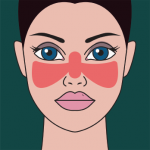In some cases, says Dr. D’Cruz, pediatric patients spontaneously mention that they have “pretty scary nightmares.” He often asks those patients if they hear voices, and sometimes, in response, he says, “It all comes tumbling out.”
Absent such an obvious opening, he recommends rheumatologists begin by asking patients about their sleep. If patients mention nightmares, then the next step is to ask if the patient has experienced nightmares while awake (i.e., daymares). This can lead to a discussion of visual, auditory, tactile, or olfactory hallucinations.
Both Dr. D’Cruz and Dr. Sloan believe such specific questioning in the clinic, using non-judgmental and nonthreatening language, may reveal that neuropsychiatric symptoms are far more frequent than previously reported.3 Once revealed, the symptoms can be treated. “These young people can bounce back really quickly,” says Dr. D’Cruz, if they receive the appropriate treatment.
Bottom Line
It’s important for patients to learn about their unique progression of symptoms, explains Dr. Sloan. For example, one patient may experience increased nightmares and tremors and feel spaced out before a flare, and another may feel manic and anxious and experience a loss of balance.
“As with many of these symptoms, increasingly disrupted dreaming sleep seems to be an indication of an impending flare in some patients,” says Dr. Sloan.
If patients can recognize and communicate a pattern to their rheumatologists, preempting or reducing a disease flare-up may be possible. Such conversations can be used to build treatment plans and physician-patient trust, leading to much-improved lives for many patients.
“Lupus really is a multi-system disease,” says Dr. D’Cruz. “Listen to the patient. … Try and put it all together, and make a story out of it. … Neuropsychiatric lupus is not all gloom and doom.”
 Lara C. Pullen, PhD, is a medical writer based in the Chicago area.
Lara C. Pullen, PhD, is a medical writer based in the Chicago area.
References
- Sloan M, Bourgeois JA, Leschziner G, et al. Neuropsychiatric prodromes and symptom timings in relation to disease onset and/or flares in SLE: Results from the mixed methods international INSPIRE study. EClinicalMedicine. 2024 Jul;73:102634.
- Sloan M, Wincup C, Harwood R, et al. Prevalence and identification of neuropsychiatric symptoms in systemic autoimmune rheumatic diseases: An international mixed methods study. Rheumatology (Oxford). 2024 May 2; 63(5):1259–1272.
- D’Cruz DP, Sloan M. Clinical observation: Are nightmares a manifestation of neuropsychiatric lupus? Rheumatology (Oxford). 2023 Jun; 62(6):2030–2031.
